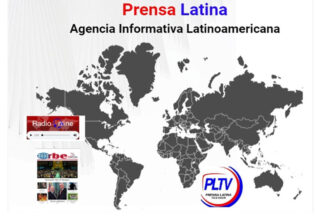The issue has regained relevance in the last few weeks, after authorities insisted on the undelayable need to achieve that goal for the sake of the monetary, exchange and credit reordering of the country’s economy, amid the execution of a new socioeconomic strategy to boost development and counter the negative effects of the crisis caused by the Covid-19 pandemic.
However, although experts agree that it is an urgent and necessary condition, it is not enough to unlock and update the national economy, which has been severely hit by the tightening of the economic, commercial and financial blockade imposed by the United States for more than half a century.
Therefore, the exceptional conditions affecting the Cuban economy pose a challenge to local authorities when eliminating the distortions caused by the monetary and exchange duality, and curbing its impact in all spheres of national life.
In statements to local media, Yolanda Garcia, director of economic studies at the Central Bank of Cuba (BCC), noted that there are elements in today’s context that cannot be overlooked, like the Covid-19 pandemic and the tightening of the US blockade, as well as the origin of the monetary duality.
In that regard, she recalled that in the 1990s, the demise of the Union of Soviet Socialist Republics (USSR) and the disintegration of the socialist camp strongly hit Cuba. Between 1989 and 1993, Cuba’s Gross Domestic Product (GDP) dropped nearly 35%; fuel consumption decreased to less than 50%, and foreign trade fell by more than 80%, she pointed out.
At the same time, she added, the US blockade was reinforced, thus aggravating the supplies of products to retail markets and unleashing monetary unbalances.
So the Cuban peso (CUP) lost its purchasing power and its functions as a means of exchange, reserve of value and unity of account, thus paving the way for a de facto dollarization of the economy, expressed in the informal market. This situation took the country to design a group of measures to reactivate the economy, reincorporate it into the international market and handle major macroeconomic unbalances.
Notwithstanding, Garcia noted, the dollarization never reached the whole economy, because salaries, social security and social assistance, services and regulated products, among other economic activities, continued to be operated in Cuban pesos.
Later, in 2003 and 2004, the level of economic recovery allowed withdrawing the US dollar from circulation and replacing it with the Cuban Convertible Peso (CUC). Since then on, two currencies have coexisted in the country’s economy (CUP and CUC), resulting in the monetary duality.
It was in 2011, after the adoption of the Guidelines of the 6th Congress of the Communist Party of Cuba (PCC), that currency unification has been part of the monetary reordering process in Cuba. For his part, Ian Pedro Carbonell, an expert with the General Directorate of Economic Policies of the BCC, noted that the monetary duality has underlying problems that must be solved soon.
In that regard, Carbonell, quoted by Granma newspaper, referred to the monetary duality itself, and the exchange duality, which establishes different types of exchange rates among the national currencies, among them and among foreign currencies, thus generating distortions in the entrepreneurial sector and in the way people interact.
BCC expert Karina Cruz noted that an ideal environment for the country’s monetary reordering in the national currency’s stability should take place under the premise of guaranteeing the issuing of money in tune with the evolution of the real or productive national economy.
So, she said, in a favorable scenario for the CUP to fulfill its functions and to preserve the macroeconomic balances, it would imply a type of exchange rate that will bring supply and demand closer to hard currencies; the existence of clear rules to issue money, and discipline between the Government’s revenues and expenditures (control of the public debt), among other variables.
Meanwhile, Lazaro Toirac, advisor at the Ministry of Economy and Planning, agrees that under the current circumstances, the monetary unification poses a challenge, although progress cannot be made in this complex world using obsolete instruments.
According to Toirac, whose statements were published in Cubadebate, the country needs an economy that can send the right signs, either good or bad.
Toirac noted that the greater complexity is not in the presence of two currencies, but the existence of different exchange rates: one for the people (25 CUP = 1 CUC = 1 USD), and another one for legal entities, thus generating confusions when measuring real costs in entrepreneurial activities, and distorting the signs in the international market and the profitability analyses.
In addition, the current rate discourages the exporting sector and disguises the real solvency of many companies; so after this obstacle is overcome, they will receive the corresponding incentives, while importers will face more expensive purchases, thus turning to the domestic market.
When the zero day comes, undoubtedly the CUP, the currency that will remain in circulation, will be devaluated, but it will really bring the exchange rate internationally recognized closer, and there will be more clarity and transparency in transactions and in entrepreneurial and productive activities in the country.
jg/mem/acl



















